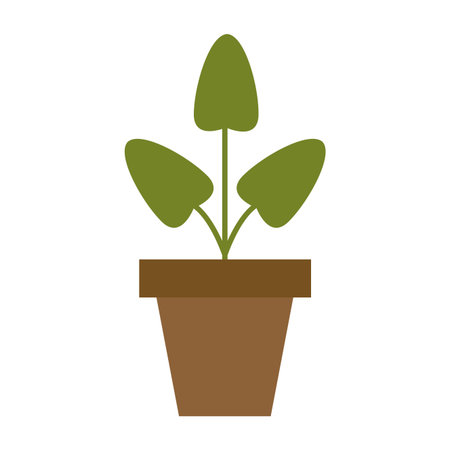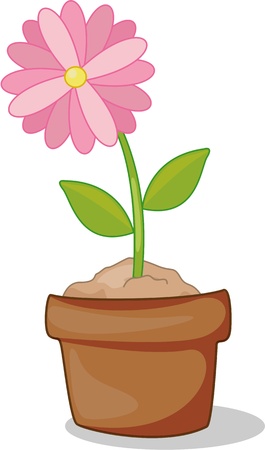Getting Started with Container Gardening
If you’re looking to bring a little green into your life without breaking the bank or taking up too much space, container gardening is the perfect solution. Whether you live in an apartment, a rented house, or just want to maximize your backyard patio, starting a container garden lets you grow herbs, veggies, and flowers practically anywhere. The first step is choosing the right spot—look for a place that gets at least 6 hours of sunlight daily, like a sunny balcony, windowsill, or porch. Don’t worry if all you have is partial shade; there are plenty of plants that thrive in lower light. Next, take inventory of what you already have before buying anything new. Repurposed items like old buckets, food containers, or even sturdy tote bags can make fantastic planters. Planning ahead is key: consider what you want to grow based on your family’s tastes and your local climate. Focus on low-cost seeds or starter plants and aim for varieties that offer continuous harvests, like leafy greens or cherry tomatoes. With just a bit of creativity and resourcefulness, you can set up an affordable and productive container garden tailored to your unique space and needs.
Budget-Friendly Containers: Think Outside the Pot
When it comes to container gardening, you don’t need fancy planters or designer pots to grow a lush garden in your small space. In fact, some of the best—and most affordable—container options are already hiding around your home or can be found for pennies at local thrift stores. By reimagining everyday items and giving them a second life, you’ll not only save money but also add a unique, personal touch to your patio, balcony, or windowsill garden.
Household Items with Garden Potential
Look around your kitchen, garage, or storage closet for sturdy containers that can be repurposed. Old colanders, buckets, baking pans, even chipped mugs and teapots can become charming homes for herbs and flowers. Just make sure there’s adequate drainage—drill a few holes if necessary—and you’re good to go. These creative solutions are perfect for renters and anyone short on outdoor space.
Recycled Materials: Green for Your Wallet and the Planet
Embrace sustainability by turning recyclable materials into functional planters. Plastic milk jugs, yogurt containers, tin cans, and even cardboard boxes (lined with plastic) work wonderfully for starting seeds or growing shallow-rooted plants. Not only do you keep waste out of the landfill, but you also stretch your gardening dollar further. Here’s a quick reference for easy recycled planters:
| Item | Best For | Preparation Tips |
|---|---|---|
| Plastic milk jugs | Herbs, lettuce | Cut in half, poke drainage holes at the bottom |
| Tin cans | Succulents, small flowers | Remove labels and sharp edges; drill holes underneath |
| Yogurt cups | Seed starting | Poke holes at the bottom; use as disposable seed pots |
| Baskets (lined) | Basil, strawberries | Add a plastic liner and holes for drainage |
Thrift Store Finds: Hidden Treasures Await
Your local thrift shop is a gold mine for unique containers at unbeatable prices. Look beyond traditional plant pots—think mixing bowls, vintage tins, wooden crates, or even old toolboxes. With a little cleaning and some minor modifications for drainage, these finds bring character and whimsy to your small-space garden without breaking the bank.
Tips for Safe & Successful Upcycling:
- Avoid toxic materials: Steer clear of containers that may have held chemicals or are made from treated wood.
- Add drainage: Plants hate soggy roots! Always ensure excess water can escape.
- Consider sunlight & space: Match the size and shape of your container to the needs of your chosen plant.
- Let creativity lead: There’s no “right” way—embrace quirky combinations that make you smile every time you see them!
This resourceful approach not only saves you money but also gives each plant its own story—a meaningful way to connect with your garden while living sustainably in any small American home.

3. Soil and Fertilizer Hacks for Less
Growing a thriving container garden doesn’t mean you have to splurge on fancy bags of potting mix or expensive plant food. With a little creativity and some DIY spirit, you can nurture your plants on a shoestring budget while keeping things eco-friendly and local.
DIY Potting Mixes: Simple & Cost-Effective
You don’t need to buy pre-mixed soil for every container. Start with basic topsoil or garden soil as your foundation—many local garden centers or hardware stores sell it by the bag or even in bulk at a fraction of the cost. Mix in materials like coconut coir (available at pet stores as reptile bedding), peat moss, and perlite or coarse sand for drainage. A classic homemade recipe is one part topsoil, one part compost, and one part perlite or sand. This blend gives your plants what they need without breaking the bank.
Composting: Turn Kitchen Scraps Into Gold
Composting is one of the best ways to create nutrient-rich soil amendments for free. Even if you’re short on space, a five-gallon bucket with holes drilled in the lid makes a handy mini-composter for an apartment balcony or small patio. Toss in fruit and veggie peels, coffee grounds, eggshells, and even shredded paper towels (avoid meats and dairy). Turn it every week to speed up decomposition. In just a few months, you’ll have “black gold” to enrich your container gardens.
Smart Sourcing: Free or Cheap Fertilizers
If you want to give your plants an extra boost, there are plenty of low-cost fertilizer options out there. Save water from boiling veggies and let it cool before watering your plants—those nutrients go straight to the roots! Crushed eggshells add calcium, while used coffee grounds provide nitrogen (just sprinkle them lightly so you don’t make the soil too acidic). You can also connect with local farms or farmers’ markets; sometimes, they’ll give away manure or compost scraps for free if you bring your own bucket.
Stay Resourceful & Keep Growing
The secret to successful container gardening on a dime is using what you have and thinking outside the box. Whether it’s mixing up your own potting soil, starting a balcony compost bin, or reusing household waste as fertilizer, these hacks will help keep both your plants—and your wallet—healthy.
4. Smart Plant Choices for Small Spaces
When you’re working with limited room and a tight budget, picking the right plants is half the battle. Container gardening shines brightest when you focus on varieties that not only thrive in pots but also offer plenty of bang for your buck—whether that’s a bumper crop of tomatoes or lush greenery to brighten up your patio. Let’s dig into some savvy plant picks for edible and ornamental success, even if all you’ve got is a sunny balcony or a cozy porch.
Edible All-Stars for Containers
You don’t need acres to grow your own food. In fact, lots of veggies, herbs, and even fruits are perfectly happy in containers. The trick is choosing compact or “dwarf” varieties that maximize yield without hogging precious square footage. Here are some favorites:
| Plant | Variety | Why It Works |
|---|---|---|
| Tomato | Tiny Tim, Patio Princess | Compact size; prolific fruit set; thrives in pots |
| Lettuce & Greens | Salad Bowl, Buttercrunch, Spinach | Fast-growing; cut-and-come-again harvests |
| Peppers | Lunchbox, Cajun Belle | Small plants, colorful fruit, high yields |
| Herbs | Basil, Chives, Mint, Parsley | Tolerate small pots; constant fresh supply for cooking |
| Strawberries | Quinault, Albion | Everbearing types give fruit all season long in hanging baskets or pots |
Ornamentals That Shine in Small Spaces
If you’re after something decorative, there’s no shortage of beautiful plants that love life in a container. Opt for those with bushy growth, trailing habits, or dramatic foliage to add color and texture without crowding out your space.
| Plant Type | Recommended Varieties/Features | Benefits in Containers |
|---|---|---|
| Pansies & Violas | Delta, Johnny Jump Up | Chemical-free color from early spring to late fall; edible blooms too! |
| Succulents & Cacti | Echeveria, Sedum, Jade Plant | Drought-tolerant; low-maintenance; quirky forms fit any nook |
| Dwarf Shrubs & Evergreens | Dwarf Boxwood, Dwarf Alberta Spruce | Year-round structure; easy to trim to shape; great for entryways or patios |
| Vines (for trellising) | Clematis, Sweet Pea, Nasturtium | Add vertical interest; many have fragrant blooms or edible flowers/leaves (nasturtiums) |
| Coleus & Caladiums (Shade Lovers) | Wizard coleus series, White Queen caladiums | Breathtaking foliage colors for shadier spots where flowers won’t thrive as well |
Mix and Match for Maximum Impact
The beauty of container gardening is how easily you can experiment: tuck some basil alongside marigolds (which help deter pests), try strawberries as both groundcover and snack source, or pair trailing nasturtiums with upright peppers for a living bouquet. Whatever you plant, aim for varieties bred for small spaces—often labeled “patio,” “bush,” or “compact”—to ensure top results without crowding.
Your Small Space Garden Can Flourish
No matter how tiny your deck or how thrifty your budget, smart plant choices turn ordinary containers into lush mini-oases that feed both body and soul. With a little planning and creativity, you’ll be amazed at just how much green goodness—and good eating—you can pack into every pot!
5. Watering Wisely: Tips to Save Money and Time
When it comes to container gardening on a budget, watering is one area where you can really save both money and effort. A lot of folks tend to overwater or use more water than their plants need, which not only wastes resources but can also drive up your utility bills—especially during those hot American summers. The good news? With a few smart habits and creative solutions, you can keep your plants happy while keeping your wallet in check.
Know Your Plants’ Needs
First things first: not all plants have the same thirst level. Some herbs and succulents, for example, thrive with less water, while tomatoes or peppers might need a bit more attention. Take a moment to group plants with similar watering needs together in the same containers. This way, you’re not giving extra water where it’s not needed—saving time and cutting down on waste.
Water at the Right Time
If you water early in the morning or late in the evening, you’ll lose less moisture to evaporation. This means your plants get more of what they need, and you won’t be constantly topping off dry pots. It’s a simple switch that can make a noticeable difference on your monthly water bill.
Reuse and Repurpose Water
This is where that frugal family spirit comes in handy! You don’t always need fresh tap water for your containers. Consider collecting rainwater in barrels or buckets—a common practice in many American backyards. Or, reuse water from rinsing veggies (just avoid anything with soap or chemicals). Even the leftover ice from a cooler after a summer barbecue can be tossed into thirsty pots instead of down the drain.
Mulch for Moisture Retention
A layer of mulch—like shredded leaves, grass clippings, or even straw—on top of your container soil helps hold moisture longer. It’s an old-school trick that reduces how often you need to water and keeps roots cool and protected.
Choose Self-Watering Solutions
If you’re handy or like a little DIY project, try making self-watering containers using recycled bottles or buckets. These systems deliver just enough moisture right where it’s needed without constant attention, perfect for busy families or anyone looking to save on routine watering chores.
By thinking ahead and getting creative with how you use and conserve water, your container garden will thrive—and so will your budget! Every drop counts when you’re growing food or flowers at home, so give these tips a try and see the savings add up season after season.
6. Upcycling and DIY Tools for Home Gardeners
When it comes to container gardening on a tight budget, upcycling is your best friend. Look around your home—chances are you have plenty of everyday items that can be transformed into practical garden tools and charming décor. Old buckets, coffee cans, and even worn-out boots can become unique planters with a bit of creativity. This not only saves money but also gives your garden a one-of-a-kind personality that reflects your resourceful spirit.
Turn Trash into Treasure
Instead of tossing out plastic containers, glass jars, or wooden crates, repurpose them for gardening use. A milk jug can become a handy watering can by poking holes in the lid, while egg cartons make excellent seed starters. Mason jars work beautifully for growing herbs on sunny windowsills, and an old colander offers great drainage for shallow-rooted plants. The possibilities are endless when you see potential in what might otherwise end up in the landfill.
DIY Garden Tools
You don’t need to buy expensive gardening gadgets—many tools can be made at home with just a little ingenuity. An old spoon or fork becomes a sturdy soil scoop or weeder. Chopsticks are perfect for supporting seedlings, and an empty yogurt cup makes a simple but effective plant label. With these homemade helpers, you’ll keep costs low while getting the job done.
Add Personal Touches with Handmade Décor
Give your small-space garden some American charm by crafting your own decorations from recycled materials. Paint tin cans in patriotic colors for festive planters or use twine and scrap fabric to make rustic plant hangers. Not only will these touches make your garden feel more like home, but they’re also gentle on your wallet and the environment.
Upcycling and DIY projects encourage a sustainable approach to gardening while making it accessible to everyone—no matter the size of their space or budget. By embracing this creative mindset, you’ll cultivate not just plants but also pride in your resourcefulness and ingenuity.
7. Harvesting the Rewards: Tips for Enjoying and Sharing
One of the best parts of container gardening on a dime is reaping the rewards—literally! After nurturing your plants in small spaces and stretching your budget, it’s finally time to enjoy the fruits (and veggies) of your labor. Here’s how to celebrate your harvest, make the most out of what you’ve grown, and connect with others along the way.
Smart Storage Solutions
Even with a modest harvest, smart storage helps you extend the life of your homegrown produce. Invest in affordable airtight containers or repurpose glass jars for storing herbs and greens in the fridge. If you’ve got extra tomatoes or peppers, try quick pickling or freezing them in freezer bags—no fancy equipment needed! Herbs can be dried by hanging bunches upside down in a dry corner of your kitchen, bringing garden-fresh flavor all year long.
Simple Cooking Ideas
Freshly picked container veggies elevate everyday meals. Toss chopped basil, cherry tomatoes, and spinach into scrambled eggs for a breakfast upgrade. Grill zucchini slices or add fresh herbs to homemade pizza. Even if you only have a handful of greens, blending them into smoothies or soups adds nutrition without waste. Remember: simple recipes let homegrown flavors shine!
Sharing with Neighbors
If your containers overflow with bounty—or you just want to spread some joy—consider sharing with neighbors. Drop off a basket of extra cucumbers at someone’s door or swap herbs with friends. Community gardens and local food pantries often welcome fresh produce donations, too. Sharing not only reduces waste but also builds connections that turn neighbors into friends.
Get More from Your Efforts
Don’t forget to save seeds from your healthiest plants for next season; it’s free and sustainable. Compost leftover plant material to enrich next year’s soil (even on balconies, small compost bins work wonders). Swap tips and cuttings with fellow gardeners online or at local meetups—this collective wisdom helps everyone improve their container gardening game.
Connecting Through Gardening
Container gardening is about more than saving money—it’s about cultivating a sense of community, resilience, and joy. Whether you’re celebrating solo with a home-cooked meal or hosting a mini-harvest party on your patio, take pride in what you’ve accomplished. By sharing knowledge, surplus produce, and encouragement, you help create a greener neighborhood where everyone can thrive—even on a dime.


